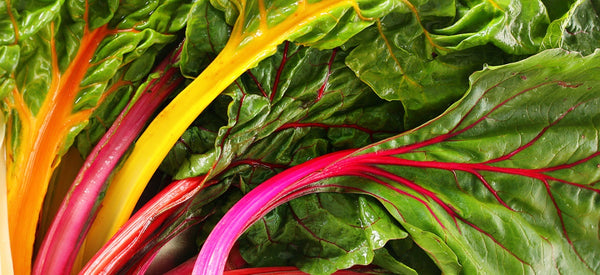


By Rachel Swanson, MS, RD, LDN
A pile of barely used Rx gels, ointment tubes, and creams lie hopelessly in the bottom of the bathroom drawer that have failed to deliver their promising results; and once again, you find yourself back at the drugstore perusing the aisles for the next best cleanser, toner, serum, or lotion. However, it’s possible to attenuate this frustrating, expensive, reoccurring cycle, if not prevent it completely by looking inward and adopting a dietary guide solution. Don’t be surprised if this advice doesn’t come from the lips of your Dermatologist— as investigating your state of internal health is an under-appreciated aspect of skincare therapy which is more likely to originate from the mouth of a Dietitian.
This article offers nontraditional solutions for acne, eczema, psoriasis and rosacea, by addressing a different source of the problem: your diet. Consider this perspective— the food you are putting in your body may very well cause the problem in the first place. It’s no different for our largest organ, our skin, to show evidence of poor dietary intake in the same way that suboptimal nutrition affects other organs, like our heart. If this root cause is addressed, using nutrition as your new approach can deliver results just as effective and powerful as traditional therapy.
A high glycemic index diet being one of them. This index refers to a scoring system based upon how drastically blood sugar rises after consuming various foods. It sounds fancy, but it’s nothing new. The foods ranking highest on the list resemble a typical Western diet of processed, white refined carbs and foods with added sugars (like cereals, pastas, sweet pastries, desserts, fruit juices, sodas). These choices send blood sugar soaring, resulting in dramatic spikes of insulin. Avoiding this dietary pattern is for good reason; especially since hyperin-sulinemia has been shown to play a role in the pathogenesis and aggravation of acne.
Fortunately, research has also shown that reversing this pattern by swapping out high glycemic index foods with lower alternatives will result in significant improvements. One of the key factors in acne is attributed to inflammation of the hair follicles and sebaceous glands, so it makes sense that this high-inflammatory diet pattern can be extremely damaging, counteracting all your trials with topical treatments, and thus counterproductive towards healing.
Just like the detriments of following a high glycemic index dietary pattern, research has also teased out the association of specific foods and their potential adverse effect on skin conditions. It’s been found that dairy is one of the most serious offenders. There are several pro-posed mechanisms of why this occurs, relating to the hormones it contains and the effects it has on serum insulin and insulin-like growth factor-1 (IGF-1).
For those that suffer from acne or any other inflammatory skin disease, it’s in your best interest to swap that skim milk out for a non-dairy alter-native in tomorrow’s morning latte.
The triggers for an inflammatory condition, like rosacea, can be effectively managed after identifying the cause of your flare-up. A detailed log of tracking symptoms along with food intake each day will make this highly individualized process more efficient, since it’s not a one-fits-all approach. In fact, based on anecdotal evidence, spicy foods or artificial sweeteners may be aggravating for some with rosacea, whereas alcohol or a stimulant like caffeine may be symptomatic for others. The same goes with atopic dermatitis (eczema) — while there are common environmental and chemical allergens you are likely already aware of, perhaps you have yet to unveil how certain dietary triggers can render your immune system over reactive.
Removing problem foods means decreased inflammation, and a calmer immune response. Learning about how to uncover these trigger foods will be of tremendous benefit, and is discussed in greater depth below.
We can’t always control sources of inflammation that affect our skin from the environment (e.g. pollution, smoke, sun exposure), or attenuate various stressors in our life, but we do have the power to mitigate inflammation internally by selecting foods that offer the best protection against free radical damage for our precious faces. Answers to skincare concerns can’t be distilled down to one bulletproof approach, but throwing out trigger foods and inflammatory agents in the diet should always remain the first line defense. While conditions such as psoriasis cannot be solved with diet alone, we have the potential to alleviate symptom severity to a great extent.
The inflammatory choices to limit include refined carbohydrates, fried foods, soda and sweetened beverages, red meat, processed meats, and margarine. Reductions of these foods are recommended across the board for all inflammatory skincare concerns — whether it’s acne, eczema, rosacea, or psoriasis.
If you consider yourself a beauty junkie or skincare guru, then it should be no secret that a number of products lining the shelves contain ingredients like vitamin C, green tea, or exotic berries due to their antioxidant protective capacity. The same meticulousness used to select these functional or luxurious skincare products should be applied to how you shop at the grocery store too, since the main goal is to ward off excessive damage and inflammation internally. This is achieved by consuming anti-inflammatory ingredients each day such as green leafy vegetables, fruits, fatty fish like salmon, plant based fats such as olive oil and nuts, and beverages like green tea.
What we put inside our body is just as important as what we leave out. With chronic inflammatory and/or autoimmune skin conditions such as psoriasis, consuming nutritious meals rich in vitamins, minerals, fiber and antioxidants will aid in internal healing and support optimal gut health, which is vital for a strong immune system.
When gastrointestinal upset occurs following a meal, we are extremely quick to identify the culprit from what we ate to save ourselves any reoccurring stomach pain or unpleasant trips to the bathroom.
Yet when our skin flares up, our diet is often ignored completely. Our largest organ on our exterior, our skin, can be just as reactive, revealing symptoms that manifest on the surface to provide us a direct reflection of our internal needs. This is where an elimination diet becomes useful. It’s temporary, does not involve any caloric restriction, and serves as an excellent approach to reveal which foods are causing your symptoms and skin related concerns.
PHASE 1: ELIMINATION
During this phase, our goal is to calm all overactive immune responses, which helps to restore balance and allows healing to take place.
Tip: gluten isn’t only present in grains. It’s also a common additive in all snack foods, condiments, and even salad dressings — be sure to check the ingredient panel!
Personalize as needed based on your specific flare-ups, in order to extinguish any additional sources of inflammation. This may include avoiding ‘healthy’ foods like select fruits, vegetables or legumes, which may be symptomatic for those with rosacea. The same applies for eczema; perhaps foods containing histamine or trigger histamine release are less tolerated, including foods that undergo microbial ripening.
PHASE 2: REINTRODUCTION
Tip: Certain foods within each group may react differently. In the dairy category, you may react differently to milk than to yogurt or to various cheeses. Also, for women whom report increased flare-ups or skin irritations during menstruation, it may be wise to skip any food challenges during this week.
Use this opportunity to channel your inner detective for this true investigative work to find out what’s best for your insides! After all, uncovering these triggers won’t only be a remedy for your looks… other exciting changes like better digestion, improved focus, and optimized energy levels will also take place. If having support and guidance along the way will equal greater success, there are always trustworthy Dietitians whom are happy to help you achieve your best looks yet.
Rachel Swanson is founder of Rachel’s Rx, a preventative medicine private practice and nutrition consultancy. She currently practices at Lifespan Medicine, a concierge medical practice utilizing top technologies, leading edge diagnostics and integrative, natural therapies to help others look, feel and live their best life possible. Prior to starting her company, she was selected twice for professional NFL cheerleading teams — Patriots and Chargers. During this time, she simultaneously led research efforts in sports performance recovery for Harvard Orthopedics, diet and oncology research for a Harvard physician-led foundation, and provided nutrition education and meal plans for professional NFL players. She recently established a community medical rotation for NYU students in Cape Town to assist those with HIV AIDs, diabetes and malnutrition. She is a trusted expert for the Dr. Oz Show, where she is frequently quoted for her advice pertaining to optimal health and nutrition. Rachel is a Licensed, Registered Dietitian Nutritionist, holds a Masters of Science in Clinical Nutrition from NYU, and completed clinical rotations at Mt. Sinai Hospital in Manhattan.
 NUTRITION
NUTRITION
 LIFESTYLE
LIFESTYLE
Sign up today to receive weekly Beauty, Nutrition and Lifestyle tips, exclusive offers, and 10% off your first purchase.
Our beauty and wellness brand offers support, services and products to help you become WELL WITHIN your skin, mind and body.
Sign up today and receive your special Friends and Family 20% off your first purchase, valid until May 31, 2017.
Stay Ever Well,
Lynne + Renee
Co-founders
Thank you for signing up today to receive weekly Beauty, Nutrition and Lifestyle tips, exclusive offers and your special Friends and Family 20% off your first purchase, valid until May 31, 2017.
Stay Ever Well,
Lynne + Renee
Sign up today to receive weekly Beauty, Nutrition and Lifestyle tips, exclusive offers, and 10% off your first purchase.
Leave a comment
Comments will be reviewed prior to posting.